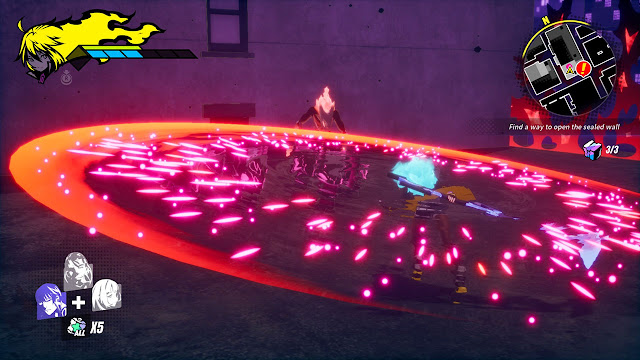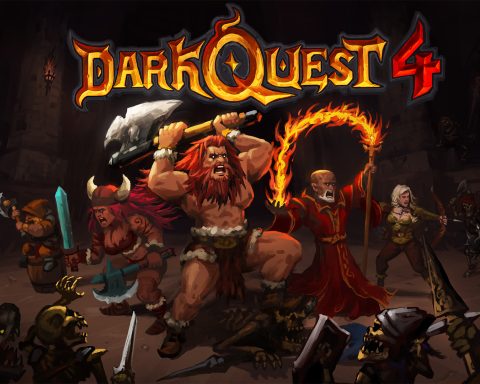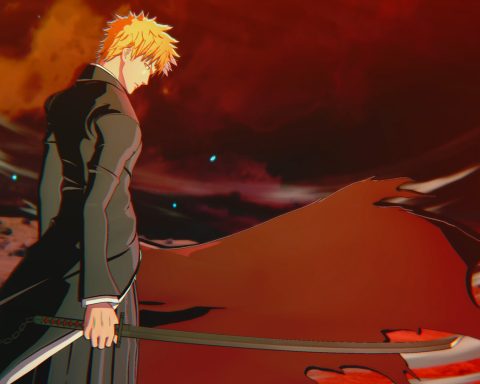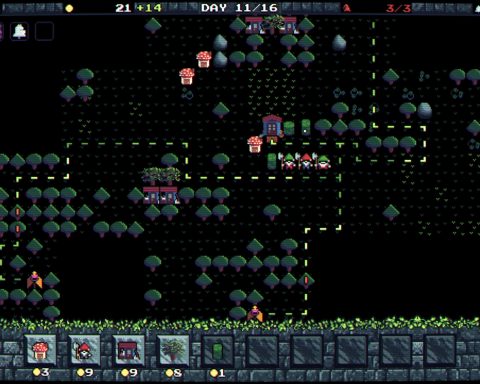Review by Matt S.
Dusk Diver was released in the wrong part of the year. Given some space away from the half dozen other, excellent, JRPGs and other big releases that have come over the last month, Dusk Diver would have grabbed some attention for its cool aesthetic and lighthearted action. Unfortunately, In the wake of Astral Chain, Daemon X Machina, Trails of Cold Steel 3, Conception Plus, AI: The Somnium Files, Atelier Ryza, Mary Skelter 2, Raging Loop, Spirit Hunter: NG, and whatever else I’ve missed, “cool” and “lighthearted fun” just isn’t going to cut it as far as anime games go right now.
Dusk Diver is set in Ximending; a shopping district in Taiwan that is well known as being the cool, funky place that locals (and tourists) go to indulge in a bit of consumerism. It’s the Shibuya of Taiwan, in other words. It’s also a pedestrians-only district, giving the area good energy on the street, and that also makes it the ideal setting for the kind of Persona-like experience that Dusk Diver aims for. During the normal hours, you play as a cute schoolgirl who runs around town, working at a convenience store and helping the locals out with their various mundane problems. Every so often, however, she’s also called on to enter an alternate universe, where she needs to kill a bunch of enemies before taking on some kind of hulking boss. Along the way she’ll also meet four different entities from this alternate world, who she can then summon to help her fight for short periods of time.
Unfortunately, while the game aspires to be Persona, it falls drastically short in a number of key areas. Firstly, it doesn’t have the same broader thematic context that Persona does. Here the story is a much more cut-and-dry tale of an evil thing stacked up against you, representing the side of good. The companions that you end up having tag along are more caricature than anything else, and while Dusk Diver offers up plenty of banter, it’s not always easy to enjoy the full impact of its humour, because the localisation is missing a fair few beats. I get the sense that in its native language Dusk Diver is a good deal more personable, but in between the clumsy sentence structure and poor spelling, this localisation has also stripped all the personality out of the game, so characters all come across as rather flat and similar to one another.
I have one more review to go before I settle in to write about Death Stranding. Here’s some video of it. #NintendoSwitch pic.twitter.com/qivIDjfC74— I really believe Japan should be freed 🇯🇵 (@DigitallyDownld) October 31, 2019
Ximending doesn’t have much going for it, either. In Persona you could really immerse yourself in any number of activities and pastimes, but here, aside from playing “find the glowing cosmic cubes” (more on that soon), and buying stuff from the vendors, there’s just not much to do. The world is colourful and vibrant, but lacking in energy and excitement. I appreciate that this game was made on a fraction of the budget of Persona, but to leverage similar aesthetics and then not do offer the same standard of design nonetheless comes across as disappointing.
Unfortunately the alternative universe is, if anything, less engaging still. In this part of the world you need to run down a largely linear path, killing things through a combat system heavily inspired by Koei Tecmo’s Musou (Warriors) series. There are flurries of light and heavy attacks that you can throw at your opponent, backed up by the ability to summon an ally to launch a special attack, and a special super-power mode that makes you even more powerful for a short period of time. On the other side, enemies have strength in numbers, and some of them have shields that need to be broken down quickly in order to get to the enemy’s actual health.
Impressively, all of this does work, and while the Switch version is locked to 30fps, it’s smooth enough action. Enemies aren’t overly aggressive or smart, meaning that it’s only the boss battles that are really a threat, but cutting through hordes of enemies is always cathartic and entertaining. The one weakness of the system is targeting. By default, you’ll target the nearest enemy if you push the button down, but in a horde, singling out the enemy you actually want to take out is a pain. Some enemies can actually summon allies, making it even more difficult to directly target them in the heat of the moment.
While the combat is functional, level design is dull. Every so often there’s a platforming segment, which is both arbitrary and in slowing the pace right down, gives you the time you need to realise that the alternative world isn’t really interesting. It’s not telling a story, as the themed dungeons of Persona titles do. It’s just there, and each time I went in, I just wanted to get back out as quickly as I could. Worst of all, the neon-heavy aesthetics and general tone of this alternative world invites a direct comparison to Astral Chain’s “other side,” and Disk Diver just does not come off well there – neither in terms of the quality of the action, nor the slick movement around the world.
Perhaps the most irritating gameplay element of all, however, is the cosmic cubes that you need to collect just to enter the alternative world in the first place. You gain them by playing well in the alternate world and finding secrets, or by looking for the proverbial needle in the haystack in the Ximending. If you haven’t yet hit a minimum number of cubes, you need to scour the entirety of Ximending to look for some more. I am all for games blocking off progress with the main narrative until a player is ready for it – be that requiring them to have certain pieces of equipment, or a particular experience level. No one enjoys finding themselves stuck in an area beyond their ability or character strength. Dusk Diver’s cubes don’t do that, though. They’re largely arbitrary in form and function, and seem to be there to justify forcing players to run around the hub world that, otherwise, offers very little reason to explore.
Dusk Diver is a noble idea. After all, it’s clearly inspired by the likes of Persona, and there aren’t many better sources of inspiration out there. I’m also right on board with the setting. Having never been to Ximending, I was quite keen to see what it’s like through the lens of this game. I didn’t get to do that, though, because the game failed to capture the characteristics or community of the district. It was another hub-style location for another anime game. Throw in a functional, but hardly boundary-pushing combat system, and you’re left with something that works, but at this particular time of year, a workmanlike experience is just going to drown under the weight of all the other really good stuff being released, sadly.
– Matt S.
Editor-in-Chief
Find me on Twitter: @digitallydownld








